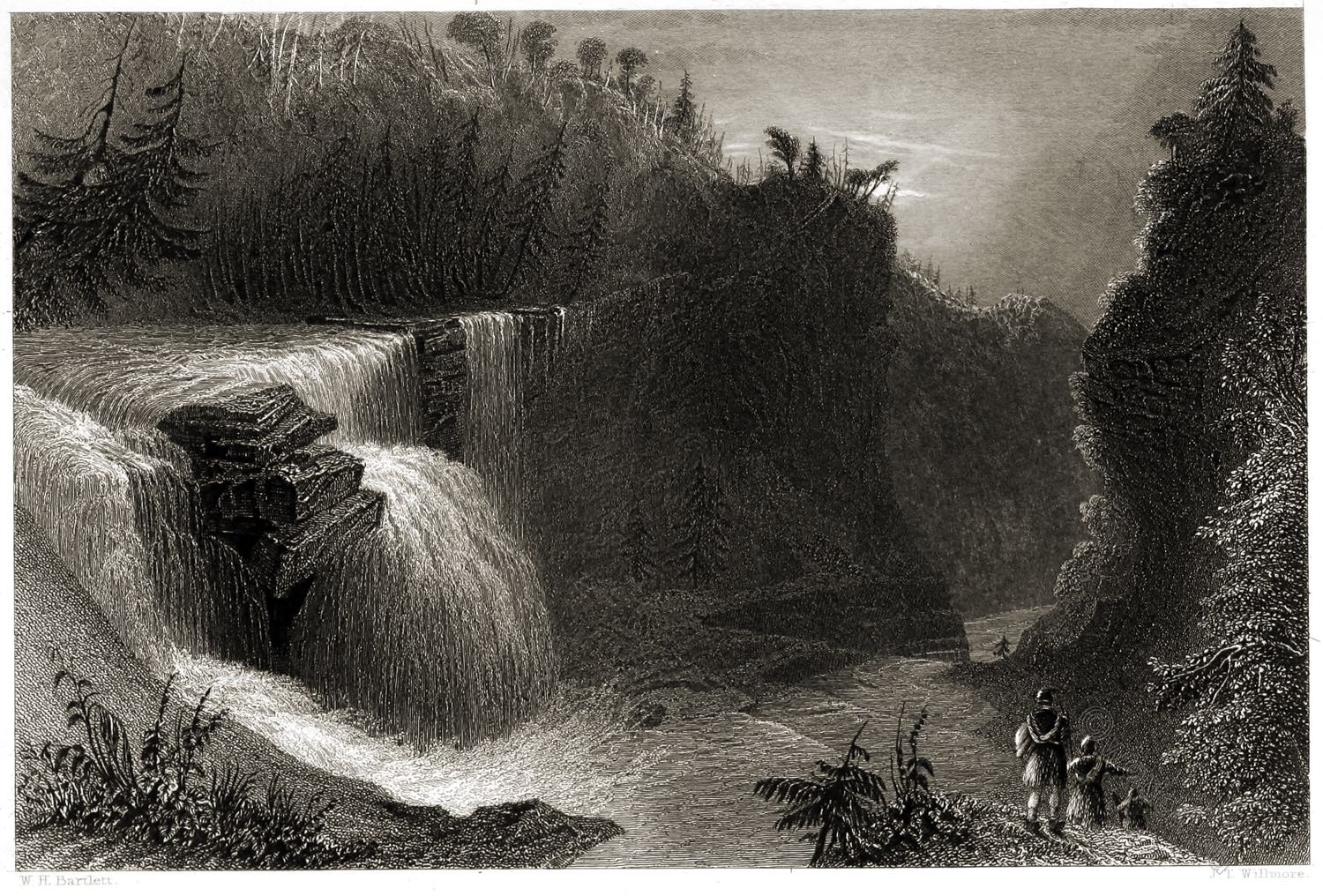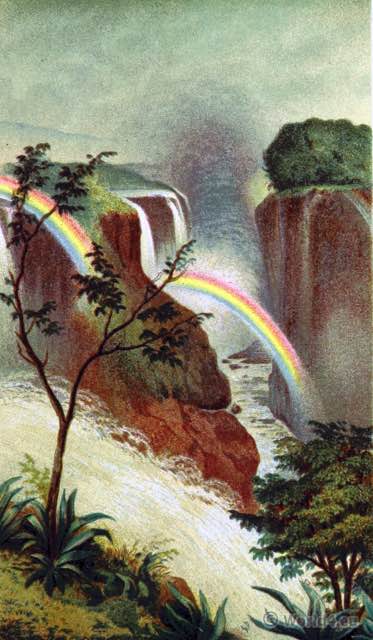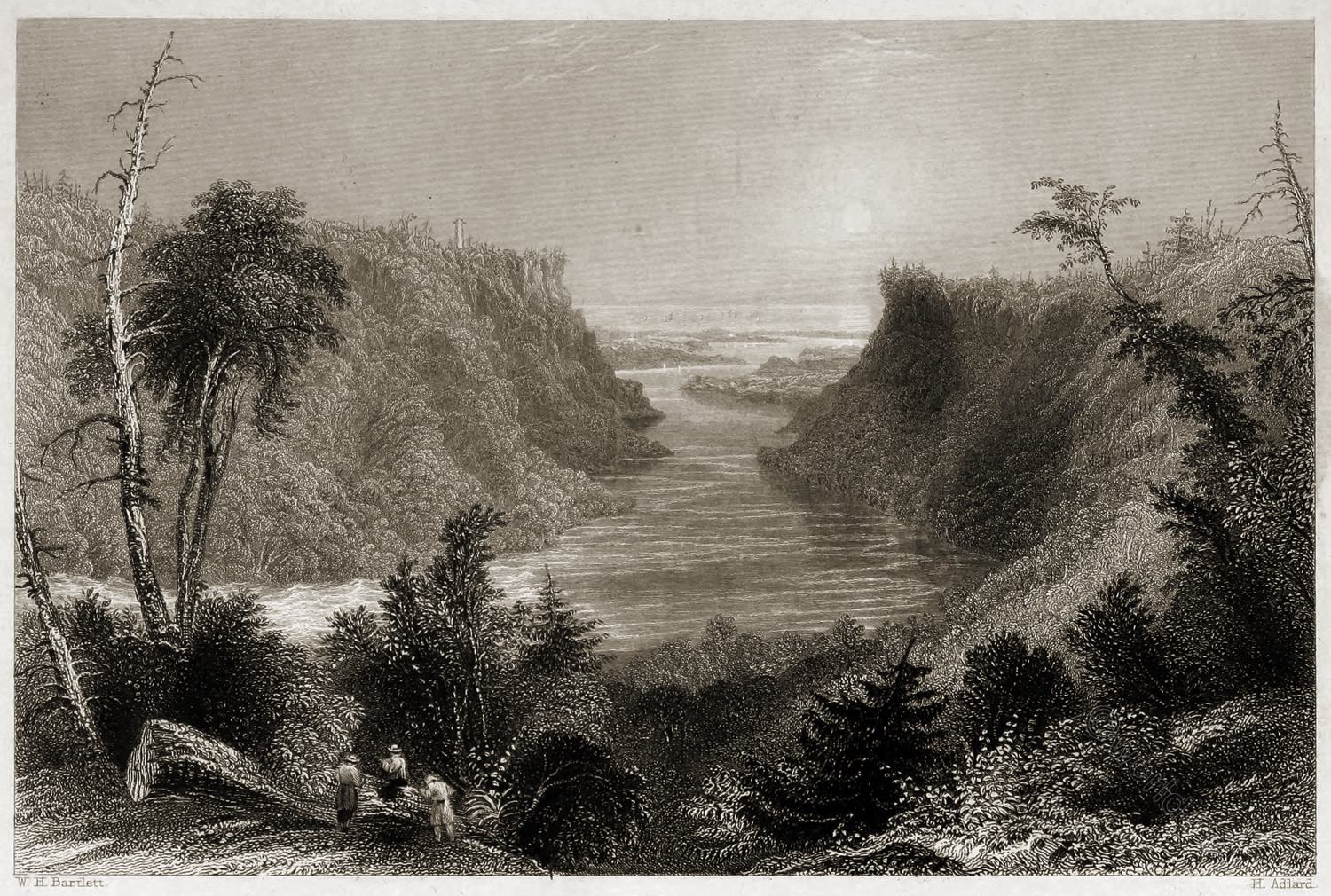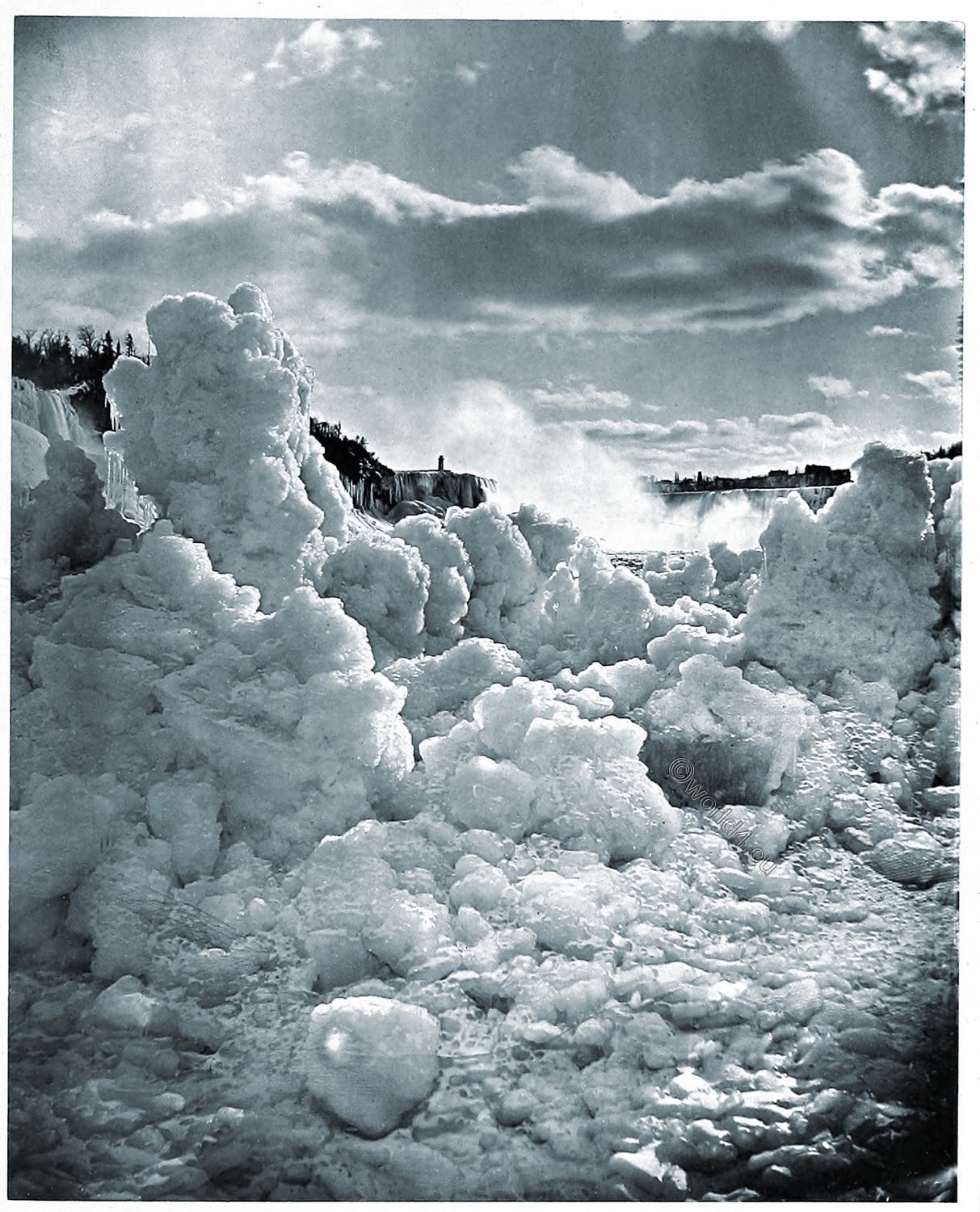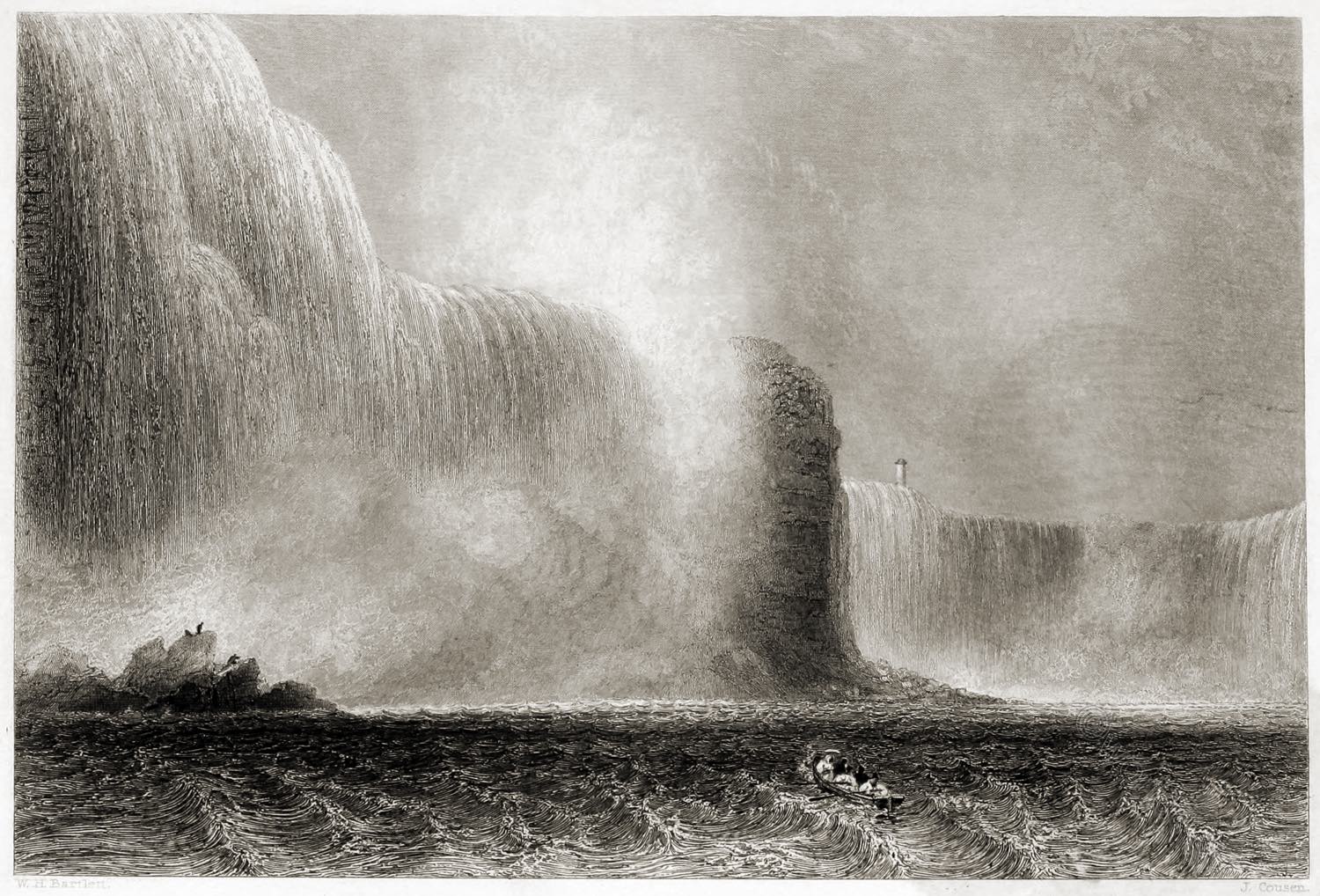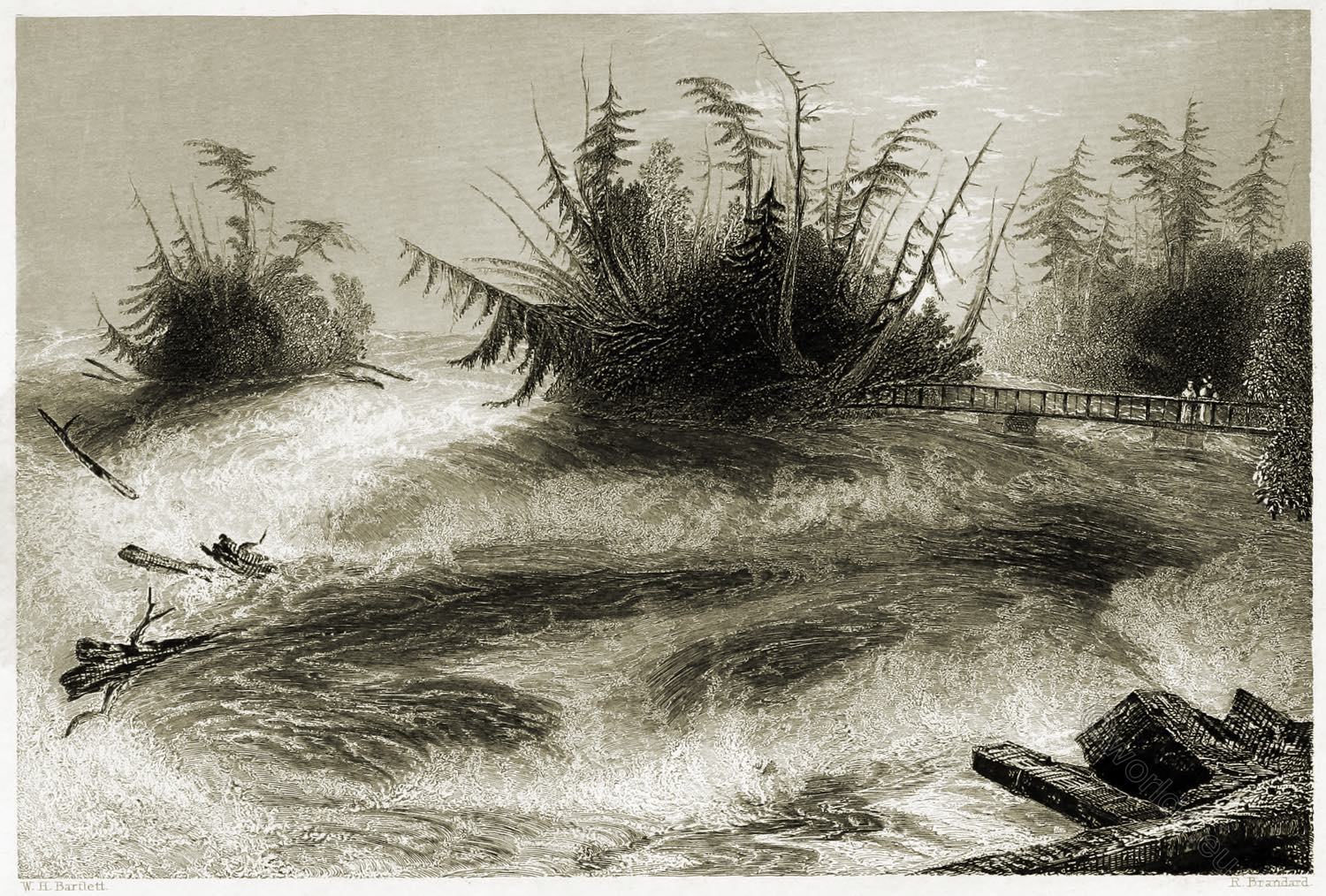
The Rapids above the Falls of Niagara.
During the last Canadian war, General Putnam, the famous partisan soldier, made the first descent upon Goat Island. A wager had been laid, that no man in the army would dare to cross the Rapids from the American side ; and with the personal daring for which he was remarkable, above all the men of that trying period, he undertook the feat. Selecting the four stoutest and most resolute men in his corps, he embarked in a batteau *) just above the island, and with a rope attached to the ring-bolt, which was held by as many muscular fellows on the shore, he succeeded by desperate rowing in reaching his mark. He most easily towed back, and the feat has since been rendered unnecessary by the construction of the bridge from which the accompanying view is taken.
*) Bateau – formerly a large, wooden, armed boat intended for various auxiliary works in the fleet, characterized by a flat bottom and shallow draft, provided with a sail. In the eighteenth and nineteenth centuries, bateaus were used extensively in North America by French and English colonists and traders, as well as by parties involved in the War of the Colonies.
Many years since, a Tonemanta chief, after a violent quarrel with his squaw, lay down to sleep in his canoe. The little bark was moored just out of the tide of Niagara river, at the inlet to the creek which takes its name from his tribe, and the half-drunken chief, with his bottle of rum in his bosom, was soon fast asleep among the sedges.
The enraged squaw, finding, after several attempts, that she could not get possession of the bottle without waking him, unmoored the canoe, and swimming out of the creek, pushed it before her into the swift tide of the river. She then turned its head toward the Falls and regained the shore. The canoe floated down very tranquilly till it struck the first ridge of the rapids. Nearly upset by the shock, she was flung from side to side by the contending waters, and the chief started from his slumbers.
The first glance convinced him that effort would be vain; and keeping the canoe upright with instinctive skill, he drew his bottle from his bosom, and put it to his lips. The draught lasted him till he reached the turn of the cataract; and, as the canoe shot over the glassy curve, he was seen sitting upright, with his head thrown back, and both hands pressed to the bottle.
Not long ago it was advertised that, on a certain day, a large vessel, freighted with two or three menageries of wild beasts, and some domestic animals, would be sent down the Rapids. The announcement drew together an immense concourse of people from every part of the country, and, at the time specified, the vessel was towed into the stream and abandoned, with the animals loose on her deck. She kept her way very gallantly till she got to the Rapids, when, after a tremendous pitching for a few minutes, she stuck fast in the cleft of a rock. The bears and monkeys were seen in the rigging, but the other animals, not being climbers, were invisible from the shore. To the great disappointment of many thousands, she went over the Falls in the night, and of her whole crew the sole survivor was a goose, who was picked up the next, day with no damage but a broken wing, and has since been exhibited as a curiosity.
The Rapids are far from being the least interesting feature of Niagara. There is a violence and a power in their foaming career, which is seen in no other phenomenon of the same class. Standing on the bridge which connects Goat Island with the Main, and looking up towards Lake Erie, the leaping crests of the rapids form the horizon, and it seems like a battle-charge of tempestuous waves, animated and infuriated, against the sky.
No one who has not seen this spectacle of turbulent grandeur can conceive with what force the swift and overwhelming waters are flung upwards. The rocks, whose soaring points show above the surface, seem tormented with some supernatural agony, and fling off the wild and hurried waters, as if with the force of a giant’s arm.
Nearer the plunge of the Fall, the Rapids become still more agitated; and it is almost impossible for the spectator to rid himself of the idea, that they are conscious of the abyss to which they are hurrying, and struggle back in the very extremity of horror. This propensity to invest Niagara with a soul and human feelings is a common effect upon the minds of visitors, in every part of its wonderful phenomena.
The torture of the Rapids, the clinging curves with which they embrace the small rocky islands that live amid the surge, the sudden calmness at the brow of the cataract, and the infernal writhe and whiteness with which they reappear, powerless from the depths of the abyss, all seem, to the excited imagination of the gazer, like the natural effects of impending ruin, desperate resolution, and fearful agony, on the minds and frames of mortals.
Source: American Scenery; or, Land, Lake, and River Illustrations of Transatlantic Nature. From Drawings by W. H. Bartlett. Engraved by R. Wallis, J. Cousen, Willmore, Brandard, Adlard, Richardson, &c. The Literary Department By N. P. Willis, Esq. London: George Virtue 26, Ivy Lane. 1840.
Continuing
Discover more from World4 Costume Culture History
Subscribe to get the latest posts sent to your email.

